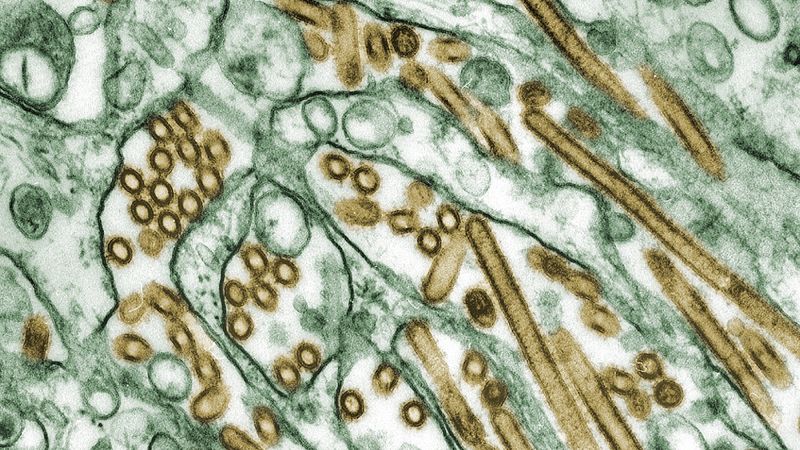Missouri Patient Hospitalized with H5N1 Bird Flu Infection, CDC Reports
A patient in Missouri has been confirmed to have contracted the H5N1 strain of the bird flu virus, according to the U.S. Centers for Disease Control and Prevention (CDC), which released the information on Friday.
The viral sequence associated with the infection was uploaded to the GISAID database, a platform that provides public access to genetic sequences of viruses for research purposes. This sequence indicates a close relationship with the strain impacting dairy cattle in 14 states this year.
The inquiry into how the individual contracted the virus is ongoing. In total, 13 other human infections have been recorded in the U.S. this year, all in individuals who had direct contact with infected animals.
This particular patient, identified as testing positive for the virus in late August, reportedly had no contact with wild birds, poultry, cats, or cattle and did not consume raw dairy products. Their close contacts also confirmed a similar lack of exposure. Lisa Cox, communications director for the Missouri Department of Health and Senior Services, noted via email that the patient did not own any pets, and there is uncertainty regarding their consumption of pasteurized dairy products. Blood tests to investigate the presence of antibodies to the virus in both the patient and their close contacts are currently being considered.
The implications of this infection are not yet clear. Experts express concern over the unusual circumstance of a human infection with no identifiable exposure to infected animals, which diverges from previous patterns. Health officials reported that all other human cases of H5N1 this year have been mild and categorized as "dead-end infections," indicating no evidence of viral transmission between individuals. Despite this, the ongoing monitoring of close contacts has shown no confirmed further cases, implying that the virus does not possess new transmissibility features.
This conclusion aligns with the genetic sequencing results, which revealed no significant mutations that would indicate higher transmissibility or severity, according to the CDC.
However, mutations observed could affect the development of candidate vaccine viruses—strains the CDC prepares for manufacturers to use in the event of an outbreak.
Additionally, information included in the CDC’s weekly FluView report indicated that a close household contact of the infected individual reported illness with similar symptoms on the same day but was never tested. Both individuals have since recovered. The CDC noted that the simultaneous symptom onset does not suggest person-to-person transmission but points to possible shared exposure.
A healthcare worker who had close contact with the patient also showed mild symptoms but tested negative for influenza. The CDC reported no additional cases have been identified following a 10-day observation period.
The confirmed patient, noted to be an adult with multiple underlying health conditions, fell ill during the week ending August 24.
Dr. Nirav Shah, principal deputy director of the CDC, addressed reporters on Thursday, stating that the patient was admitted to the hospital with symptoms including chest pain, nausea, vomiting, diarrhea, and weakness, and that the hospitalization was due to the patient’s preexisting medical conditions.
Upon testing positive for an influenza A virus while in the hospital, routine testing conducted by the state of Missouri identified the H5 virus, which is uncommon. The sample was subsequently sent to the CDC for further confirmation.
When asked whether the CDC categorized the flu infection as incidental to the patient’s hospitalization, Dr. Shah clarified, “no, we’re not describing it as incidental. That was a question that was on our minds. But no, it was not incidental there.”
While Dr. Shah refrained from providing additional details to protect patient confidentiality, CDC scientists noted that the sample contained a low concentration of the virus and cautioned that complete sequencing of the virus’s eight segments might not be feasible.












